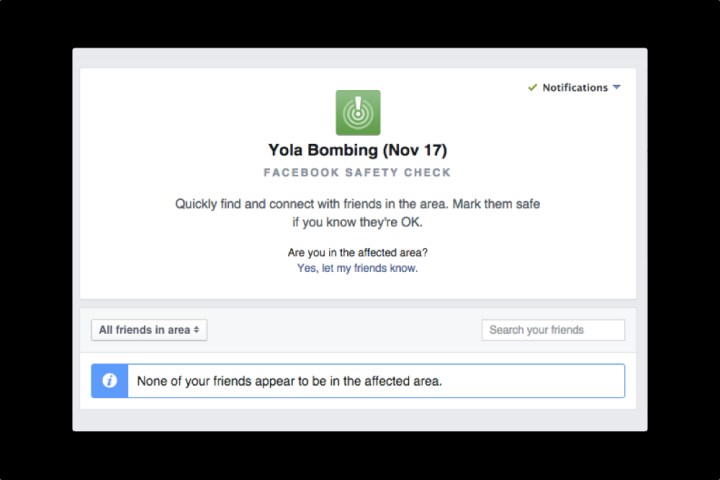
Facebook will be testing a version that allows users to contact friends and loved ones and let them know they are safe, and also send invites to people in the area to perform a similar action. This could prove more efficient than having a team that may be located far away from the event report on the event. It also leaves the decision whether or not to even activate the system to the users who are on the ground going through the crisis.
“This way the community spreads the safety check and promotes it, instead of Facebook itself doing this top-down broadcast,” says Safety Check lead engineer Peter Cottle. “I think this is really exciting to have the community really be the ones. Talking about it triggers the initial prompt and then they check on their friends.”
When Facebook deployed the system during the Paris terrorist attacks, there was a backlash of questions regarding what the criteria are to do so. What about the bombings in Ankara, Turkey and Beirut, Lebanon? The degree of urgency, scale and scope of the crisis, and its duration, all come in to play, How will this affect the political and economical infrastructure of the area in question? How many people were directly affected?
“We care about all people equally, and we will work hard to help people suffering in as many of these situations as we can,” Facebook CEO Mark Zuckerberg posted in a comment after the Paris attacks.
Safety Check is easy to use, with one-click activation. Facebook itself notifies users in the affected area to update their status. These users can then in turn mark people in their network as safe. According to
Editors' Recommendations
- You can now use the Add Yours sticker on Reels for Facebook and Instagram
- You can now check your credit report for free every week. Here’s how
- You can now download Facebook’s Messenger app to your desktop
- Facebook hires Reuters to fact-check posts, but politicians can still lie in ads
- The Off-Facebook Activity tool lets you take control of your shared data


